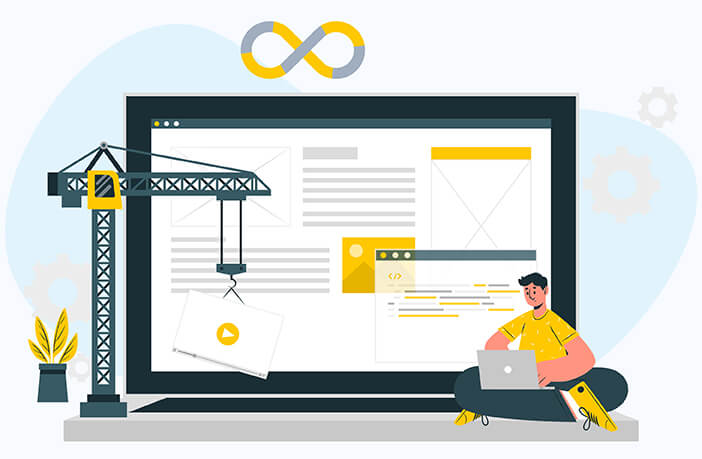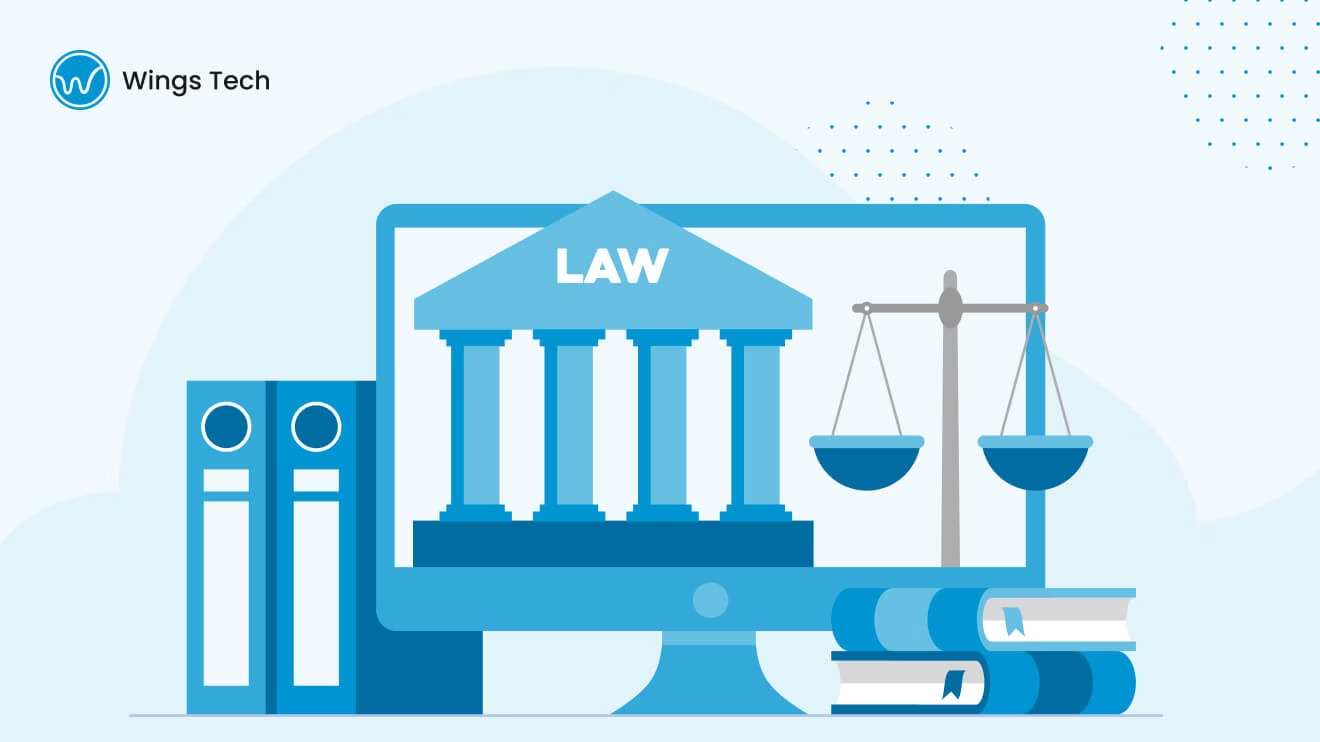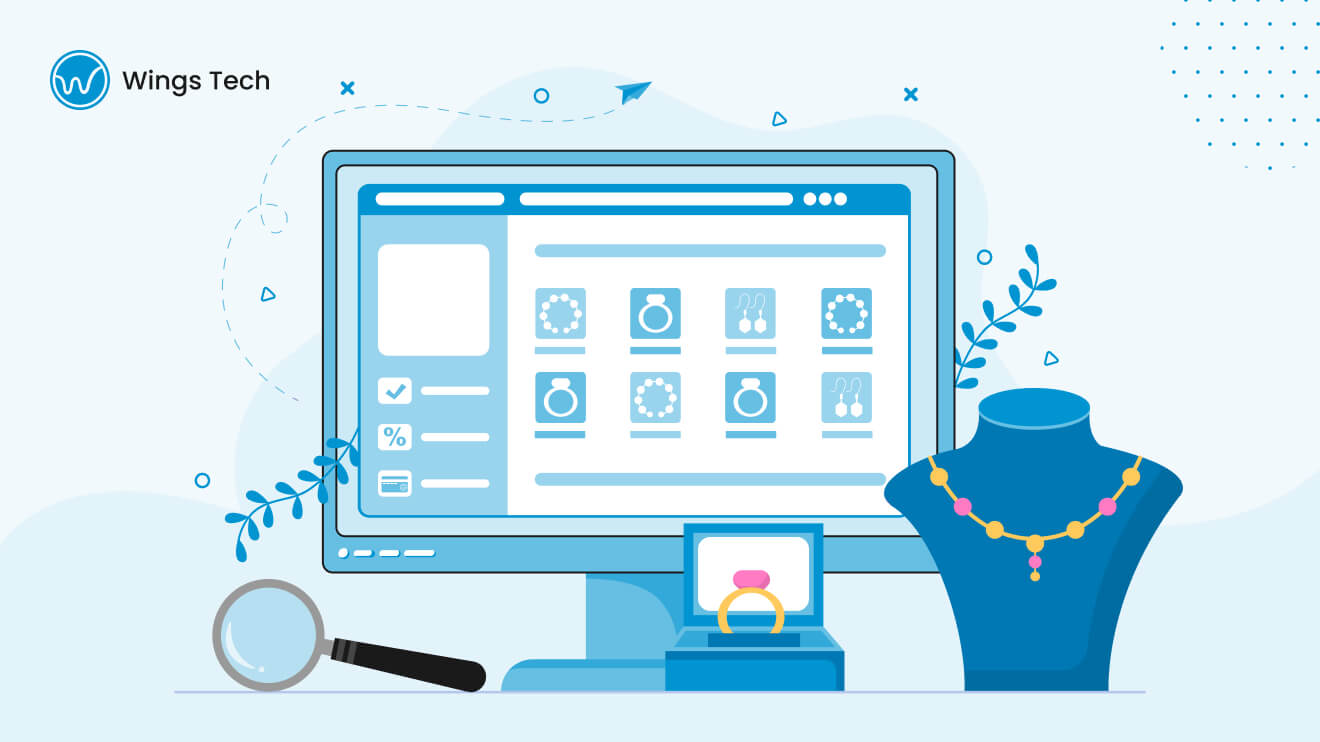Table of Contents
Co-development software. The word itself sums it all up; it’s a unified effort from disparate organizations to develop the next big software. In the past few years, visionary companies from around the world have started implementing collaborative software development, with expert co-development partners tearing down barriers and pooling resources, knowledge, and innovation through their expertise.
So what exactly is co-development software? Why does it matter and how it supercharges your projects? This guide is your backstage pass to understanding this collaborative approach. Let’s dive in!
What is Co-Development Software?
Co-development software is a collaborative method in software development where different organizations or teams pool their knowledge and effort to produce a software application or system. The model emphasizes shared accountability, innovation, and effective distribution of resources. As a result, each co-development partner involved in the process is in a position to leverage their respective strengths, expertise, and technology in achieving their common goal.
Benefits of Co-Development Software
A few years ago, the vast majority of companies depended on internal teams for development. But, co-development software soon became the strategy behind building smarter, quicker, and more effective solutions. Organizations today understand that placing all their bets on a single development team is a major risk and thus take a collaborative development approach for software development. Let’s look at some benefits you can see with the co-development software approach.
Faster Development Processes
Instead of a single team focusing on a particular development phase, multiple co-development teams can focus on separate phases of a development cycle. This creates a cohesive software development cycle that operates on steroids.
Cost Saving
Why hire the whole team of specialists when you can have a co-development partner to share resources? With a co-development approach, your overhead costs like training, infrastructure and recruitment gets limited.
Access to Skilled Experts
Access top talent without the cost of full-time hiring. Get experts tailored to your project’s unique needs affordably and efficiently.
Quality and Innovation
Two (or more) heads are better than one. The various perspectives amalgamated together through different co-development teams create a new and innovative software that’s high-quality & cutting-edge.
Flexible and Scalable
Hiring as the project scales can be a cumbersome process. But, having an efficient co-development software offers the flexibility to adjust resources and efforts as your project evolves.
Shared Risks
With co-development software, your risks are not yours alone – your partners or teams share full responsibility. This helps mitigate setbacks and leads to better solutions.
Improved Teamwork
Codevelopment promotes open-minded communication, knowledge sharing, and trust among teams, which means you have stronger partnerships or smoother workflows.
Fast Market Launch
Co-development software helps in hitting tight deadlines by combining resources and expertise, which is the fastest way for pivoting your product straight to the market.
Customized for You
Unlike off-the-shelf software, co-developed solutions are designed solely for your business. This approach works well for custom web application development, aligning the product with your business goals.
Learning and Growth Opportunities
Co-development isn’t just about making software, it also allows your and partner teams to share knowledge and streamline processes with the best practices.
How does the co-development process work?
Like all successful development processes, co-development software also requires a well-articulated roadmap. Similar to the website development process, co-development emphasizes structured phases that ensure efficiency and collaboration.
Understanding the needs of the project
Start by identifying what your project requires. Think about the problems you’re aiming to solve. Then, figure out the skills and abilities needed to achieve your goals. Clear answers to these questions will guide you in the right direction.
Strong partnership building
For a successful project collaboration, select the right partners or teams which share your vision and work ethic as well as credible skills and experience.
Set goals and project scope
Define the goals, deliverables, and boundaries for the project. A clear scope keeps everyone focused on the same page, so no unprecedented scope changes pop up in the future.
Assign clear roles
Each team member should know exactly what they’re responsible for. Whether it’s coding, testing, or designing, when clear roles are defined, it enhances accountability and smooth workflows.
Share knowledge and tools
Successful co-development relies on sharing knowledge, software tools, frameworks, and even lessons learned from past projects to maximize efficiency.
Follow agile development
Agile methodologies keep the process flexible and iterative. The process tracks progress, and changes or challenges are addressed very quickly with regular sprints and updates.
Clear communication
Co-development projects are glued by frequent and transparent communication. Utilizing collaboration tools and holding regular check-ins keeps everyone in line.
Align teams and goals
All teams should be informed of the shared objectives. Alignment helps create synergy and ensures that the end product meets both technical and business needs.
Quality testing
Testing must be done intensively before a product is rolled out. Problems caught and corrected early can lead to a successful launch and a quality finished product.
Rolling the product out and supporting
Getting your product out the door is the final step, but that’s not all. Continuing support and maintenance ensure your software remains relevant and reliable.
Features to Consider in Co-Development Software
Co-development software emphasizes smooth collaboration and efficient project execution. Imagine a feature entirely forgotten, or a major design flaw that’s missed, just because the teams couldn’t collaborate timely and effective. Let’s have a look at some of the essential features you should look out for:
Live Collaboration Tools
Real-time collaboration for teams working from other places is very important. This can be simultaneous editing, instant feedback, or even live updates, so everyone can be on the same page and avoid misunderstandings in the process.
Robust Version Control
Efficient version control systems, such as Git, track changes, manage code lineage, and foster collaboration among many developers. These systems help prevent conflict and ensure that all users of the code are working on the latest code repository.
Integrated task management
Functionalities allow teams to assign, track, and prioritize tasks within the development ecosystem. This improves workflow effectiveness, promotes accountability, and supports adherence to project schedules.
Safe file sharing and storage practices are required
File transfer and storage need to be safe. For instance, characteristics such as encryption for file transfer, access rules, and reliable storage options are what help to protect the data and promote effective collaboration.
Integrated communication features
Good communication is essential for a successful team. Integrated chat features, video conferencing tools, and discussion platforms enable instant communication, speedy decision-making processes, and foster a collaborative team environment.
Customizable workflow options
Each project is unique. Configurable workflows enable teams to configure the software to their specific processes and therefore, it will be efficient and the tool will align with their development methodologies.
Third-Party Tool Integrations
Co-development software can integrate third-party tools, including CI/CD pipelines, testing frameworks, and project management applications, in order to extend the functionality of the co-development software. This interoperability creates a cohesive ecosystem that supports all aspects of the development process.
Advanced Security Measures
The protection of intellectual property and sensitive data is critical. Advanced security features include multi-factor authentication, role-based access control, and periodic security audits. These features have significantly contributed to the maintenance of the integrity and confidentiality of the project.
Robust analytics and reporting
Some facilities provide useful insights into project progress, team performance, and potential roadblocks. Thorough reports enable decision-making and promote continuous improvement.
The system demonstrates scalable and reliable performance
As projects scale, your software should scale as well to avoid performance degradation. Scalability ensures that the tool can handle increasing workloads, the number of users, and volumes of data, and thus the long-term success of a project.
10 Common Challenges in Co-Development and How to Tackle Them
| Challenge | Solution | |
|---|---|---|
| 1. Communication Barriers | Differences in language, culture, time zones, and communication style are barriers to the effective collaboration of co-developers. This might lead to misunderstandings and miscommunications that could delay or create quality issues in the work. | Collaboration tools like Slack or Microsoft Teams can help fill communication gaps. These applications have real-time messaging, video conferencing, and file sharing that allow seamless communication among members. |
| 2. Misaligned Goals | If a unified vision does not exist, teams may chase divergent objectives that can be inefficient and even derail the project. | Establishing clear, measurable goals from the start ensures all parties are aligned. Regular check-ins and updates help maintain focus and adjust strategies as needed. |
| 3. Intellectual Property Concerns | Collaborative efforts can raise questions about ownership and rights to developed assets. | Drafting comprehensive legal agreements that outline intellectual property rights, usage, and distribution terms protects all stakeholders and clarifies ownership. |
| 4. Cultural and Time Zone Differences | Working across various cultures and time zones can lead to misunderstandings and delays. | Accommodating different working hours and cultural differences through flexible schedules and the use of asynchronous communication tools ensures that the team is easily available when needed. |
| 5. Quality Assurance Issues | Software defects and user dissatisfaction arise from inconsistent testing practices. | Rigorous testing, such as automated testing and continuous integration, ensures quality at all development stages. |
| 6. Project Delays | Poor management or unexpected challenges can cause project schedule delays. | Agile methodologies facilitate iterative development, consistent evaluations, and timely modification, hence allowing teams to stay focused and respond to changes in an efficient manner. |
| 7. Dependency on External Teams | Risks associated with performance and reliability may be attached to external collaborators. | Monitoring progress and establishing transparent communication pathways with the external teams is crucial for maintaining alignment and accountability and, hence, reducing the risk. |
| 8. Resource Management | The inefficient use of resources will give rise to bottlenecks and increased costs. | Resource management applications, such as Jira or Trello, allow monitoring the distribution of resources, inadequacies in these, and also optimize utilisation effectiveness. |
| 9. Security Risks | In collaborative environments, resource management applications are susceptible to cyber breaches and vulnerabilities. | End-to-end encryption, multi-factor authentication, and security assessments that happen periodically keep information confidential. |
| 10. Scalability Constraints | Poor software development with a lack of scalability impairs growth and operational performance. | Design scalable architectures and load tests to ensure that the software can support more users without loss of performance while planning for growth. |
Best Practices to Implement Co-Development Software
Co-development software implementation requires careful planning and execution. Here are the best practices that can help you streamline the process:
Define Clear Objectives and Scope
Start with a clear vision. Establish project objectives and define the scope from the start to avoid any confusion. Everyone involved should understand the end goal and the boundaries of the project.
Choose the Right Collaboration Tools
The choice of the right tools for the co-development approach is very important to ensure successful collaboration. Tools like Slack for communication, Trello for task management, and GitHub for version control all help to keep everyone on the same page.
Open Lines of Communication
Communication should always be clear and open. Open channels of easy discussion, updates on the projects, and instantaneous feedback can cut down on misunderstandings and get everyone in on the loop.
Set Realistic Timelines and Milestones
Do not stretch the timelines too thin. Set reachable deadlines and achievable milestones that will enable the team to track their way to the achievement of the milestone. This also prevents delays, hence keeping momentum.
Security and Confidentiality
In co-development, data security is paramount. Use secure platforms and implement encryption to safeguard sensitive information from threats.
Collaborative Team Culture
Instill teamwork and let every member of the contributing team feel appreciated. Collaboration needs to be the central theme behind your approach, with open exchanges of ideas, where mutual respect is always present.
Agile Development Methodologies
Agile methods support flexibility and continuous improvement. Regular sprints and iterations allow teams to quickly adapt to change and ensure that the product evolves as needed.
Continuous Monitoring of Progress and Feedback
Track the progress of the project and collect feedback from all stakeholders at regular intervals. This will identify issues early, and the project will stay on track with its goals.
Proper Documentation and Knowledge Sharing
Good documentation is the key to success. Ensure that all decisions, changes, and processes are well documented to support future development and enable easy knowledge sharing among teams.
Plan for Scalability and Long-Term Support
Continuously plan for future changes. Ensure that the software is expandable and scalable to cover growth and be supported in the long term, and handle any emerging issues after an initial installation.
Co-Development Software Vs Traditional Software Development
Co-development software has various advantages over the traditional approach, especially in collaboration, speed, flexibility, and scalability. It is a modern approach for companies that want to streamline development and share expertise efficiently.
| Aspect | Co-Development Software | Traditional Software Development |
|---|---|---|
| Collaboration | It emphasizes shared responsibility and teamwork among multiple parties. | Typically, it involves a single development team or vendor. |
| Development Speed | Faster because of combined expertise and shared resources. | Slower because it relies on the capacity of a single team. |
| Flexibility | Highly adaptable, as teams can make changes in real time. | Not very flexible, as change requires approval or a lot of resources. |
| Cost | It is cheaper because resources are shared and risks are spread out. | It is costlier because resources are only owned, and the risk is high. |
| Knowledge Sharing | Teams exchange ideas and methods regularly. | Knowledge sharing is minimal. This mostly occurs within an internal team. |
| Scalability | It is easy to grow because there are shared responsibilities and special skills. | It is hard and costly to grow because of limited resources. |
| Risk Management | Shared risks balance out responsibility. | The risks are concentrated, thus applying more pressure to one team. |
| End Product Quality | Better quality emanates from the strengths of other teams working together. | Quality relies on the skills and resources of the internal team. |
Real-world applications of Co-Development Software
Co-development software is transforming the way teams collaborate and design. It gives a flexible method that fits all industries and teams.
Startups normally operate in dynamic environments where it is crucial to get to the market as soon as possible. Co-development software assists teams in the fast creation and development of Minimum Viable Products by leveraging the skills and resources of various groups. For instance, Dropbox used co-development approaches with external partners to create its MVP. Collaboration tools and flexible methods allow a startup to quickly make changes, get user feedback, and alter the product without big delays or costs.
Co-Development Software Trends You Should Know About
The world of co-development software is changing fast; with more and more enterprises embracing collaborative software development approaches to product development, it becomes important to keep track of the latest trends that are shaping the industry. Here are some examples:
Use of Open Source Software
Open-source software has evolved from being a last-minute option to becoming an integral part of many co-development software workflows. It allows teams to collaborate freely on projects without the barriers created by proprietary software.
Agile and DevOps Integration
Integration of Agile and DevOps. Agile methodology breaks large projects into workable pieces for teams. It becomes easier for teams to adapt to changes and work together better. DevOps bridges the gap between development and operations.
Cloud Development Tools
The development of cloud technology has made it possible for co-development teams to access strong tools and resources from anywhere in the world. Another thing about cloud-based software is the ability to have real-time collaboration, which means a distributed team can work together from one single platform.
Cross-functional teams
Co-development software in modern settings becomes a success when design, marketing, operations, and many more departments are included. This holistic inclusion will ensure that the software developed addresses the needs of all stakeholders and aligns itself with business goals.
Microservices Architecture
This kind of architecture helps offer the much-needed flexibility of concurrent co-development; different teams can work on various microservices concurrently without disrupting one another. Further, it reduces the complications in scaling up or updating a system.
Wrapping up,
Co-development software changes the way teams work, breaks interdepartmental silos, and creates a way for faster, more efficient development of products. In summary, co-development software enables organizations to encourage innovation, respond quickly, and generally improve the user experience, thus remaining competitive in an increasingly dynamic digital environment. Adopting these strategies is necessary for success in today’s collaborative development landscape. Are you looking for a co-development software partner? Let’s connect!









